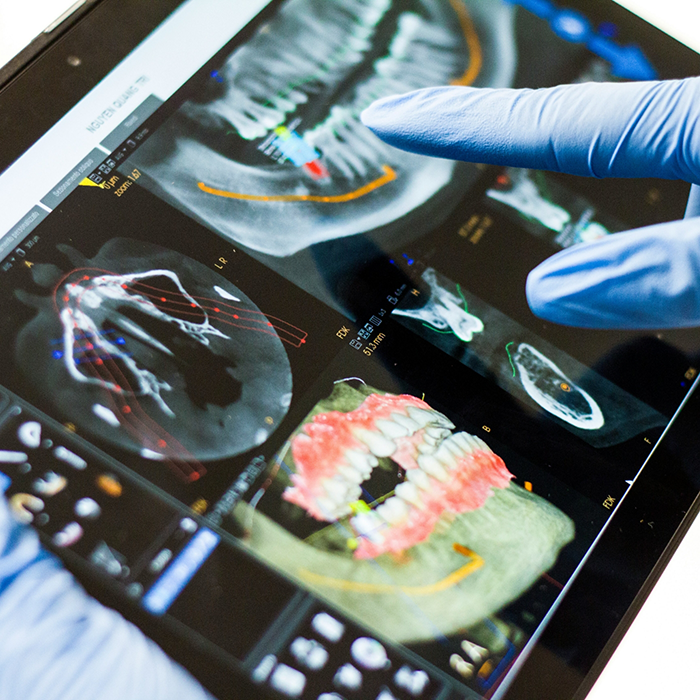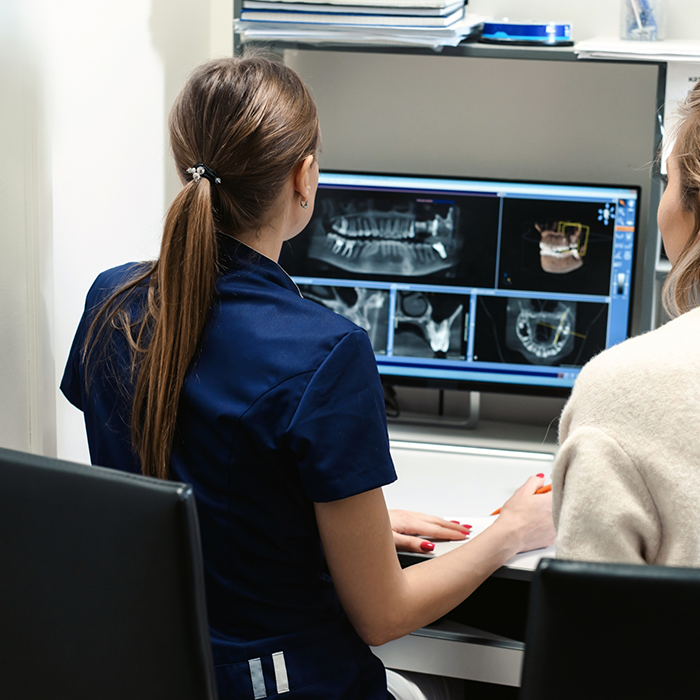3D Guided Dental Implants Raynham
Ensuring Optimal Outcomes for Dental Implant Placement
Dental technology only continues to become more advanced and more involved, and one way that we’re able to ensure precise placement and high-quality dental implant restoration is by using special software to guide the process. This ultimately allows your implants to serve you well for life since they’re being placed exactly how they need to be. To learn more about 3D guided dental implants, or to schedule your consultation with our team in Raynham, contact us today.
Why Choose Raynham Dental for 3D Guided Dental Implants?
- Skilled Implant Dentist with Several Years of Experience
- Personalized Implant Treatment Plans for Every Patient
- Full Dental Implant Service Under One Roof
What Are 3D Guided Dental Implants?

Using cutting-edge 3D imaging and computer-assisted technology, Dr. Al can plan and place dental implants with greater precision, accuracy, and efficiency. This technique involves creating a virtual 3D model of your mouth and jaw, which allows Dr. Al to map out the optimal placement for your implants before any surgery takes place. With the help of this advanced technology, 3D-guided dental implants can improve the overall outcome, reduce surgery time, and enhance patient comfort.
How 3D Guided Dental Implant Placement Works

The process of 3D-guided dental implants combines advanced imaging, digital technology, and specialized surgical guides to ensure optimal results. Here’s how it works:
- Comprehensive 3D Imaging and Scanning: The first step in the 3D-guided implant procedure is obtaining detailed 3D scans of your teeth, gums, and jawbone during a consultation. This typically involves a Cone Beam CT (CBCT) scan, which produces a highly detailed, three-dimensional image of your oral structures. The scan provides critical information about bone density, the location of nerves and blood vessels, and the overall shape of your jaw.
- Digital Implant Planning: Once the 3D scans are taken, the data is fed into specialized software that creates a 3D model of your jaw. Dr. Al can use this model to virtually plan the placement of your dental implants. The software allows him to identify the optimal placement for each implant, ensuring it integrates properly with your jawbone and adjacent teeth.
- Surgical Guide Creation: Using the digital plan, a custom surgical guide is created. This guide is a precise, 3D-printed template that fits over your teeth and gums. It has small holes or channels that correspond to the exact locations where the implants will be placed. The guide helps ensure that the implants are positioned at the correct angle and depth with minimal incisions and surgical interference.
- Precise Implant Placement: On the day of your procedure, the surgical guide is used to place the implants with high precision. The guide ensures that the implants are placed exactly where they are needed, reducing the need for guesswork or adjustments during surgery. This technology often allows for a quicker procedure with less discomfort and a faster recovery time.
- Recovery and Aftercare: After the procedure, you may experience some swelling or tenderness, but the recovery time is typically shorter compared to traditional implant surgery. Dr. Al will provide instructions on post-surgical care to ensure proper healing.
Benefits of 3D Guided Dental Implant

- Higher Precision: The digital planning ensures that implants are placed in the optimal position, reducing the chance of errors and complications.
- Less Invasive: The surgical guide minimizes the need for large incisions, reducing discomfort and speeding up recovery.
- Faster Recovery: With less trauma to the gums and bone, patients typically experience a quicker healing time.
- Reduced Risk of Complications: The accuracy of the planning and guided placement reduces the risk of nerve damage, sinus complications, and other issues.
- Predictable Results: With detailed 3D imaging and planning, we can achieve a more predictable and successful outcome, improving both function and aesthetics.
- Comfort: The procedure is generally faster, and many patients report less discomfort compared to traditional implant methods.
Who Can Benefit from 3D Guided Dental Implants?

3D-guided dental implants are an excellent option for a variety of patients, including those with:
- Insufficient Jawbone: If you have experienced bone loss or have insufficient bone volume, 3D imaging can help your dentist plan for bone grafting or other procedures to ensure a successful implant placement.
- Challenging Implant Locations: In cases where the implant needs to be placed near sensitive areas (like nerves, sinuses, or adjacent teeth), 3D guidance can help navigate these challenges with great precision.
- Full-Mouth Restoration: If you need multiple implants or a full arch replacement, 3D-guided technology ensures that each implant is placed in the optimal position for function and aesthetics.
- Patients Seeking a Minimally Invasive Procedure: Those who prefer a less invasive approach to implant surgery can benefit from the precision and reduced recovery time associated with 3D-guided implant placement.

